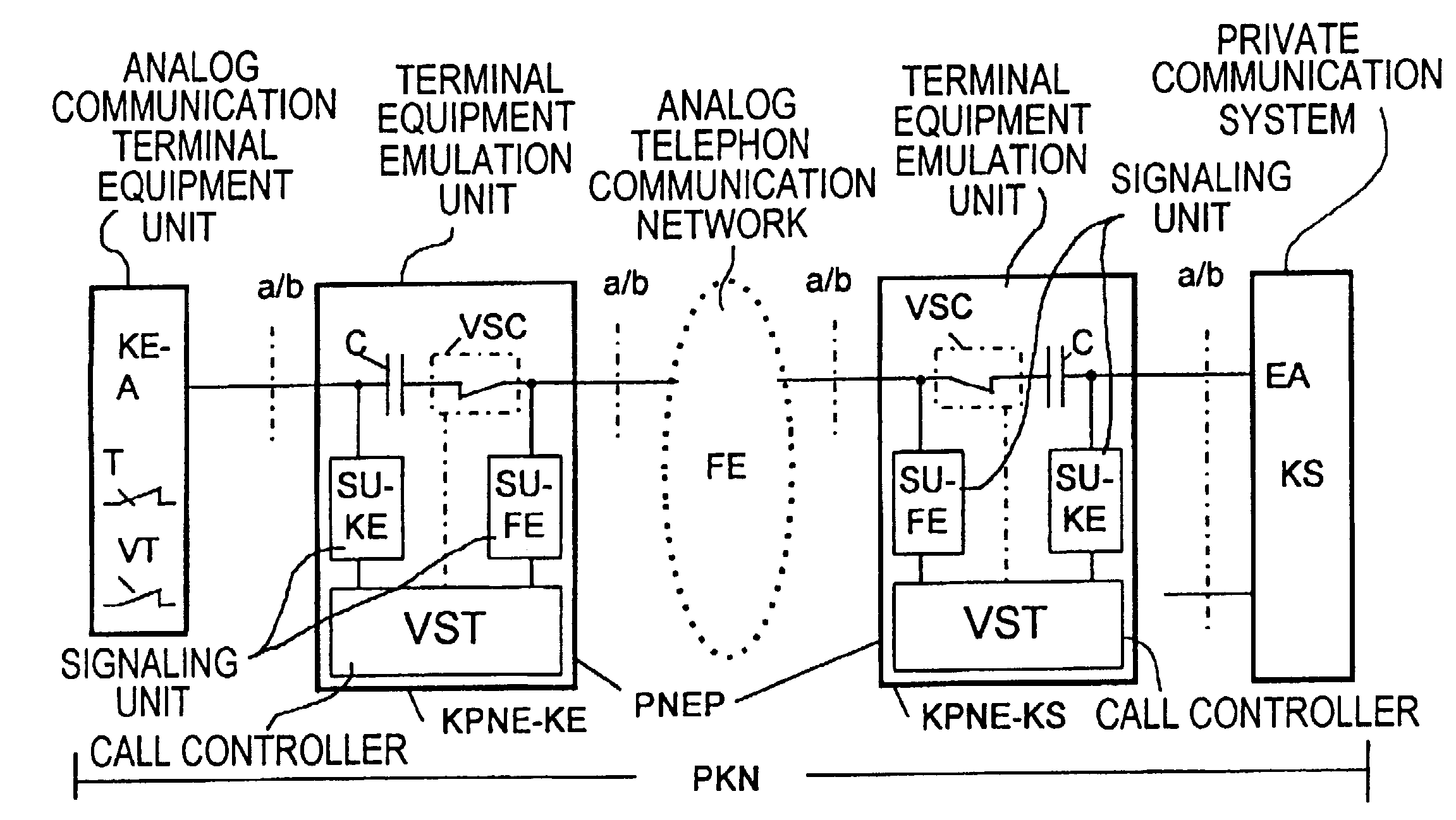Implementation of additional functions for user connections having individually configured performance criteria
a technology of user connection and performance criteria, applied in the field of implementation of additional functions for subscriber lines, to avoid unnecessary use of network resources or connection channels
- Summary
- Abstract
- Description
- Claims
- Application Information
AI Technical Summary
Benefits of technology
Problems solved by technology
Method used
Image
Examples
Embodiment Construction
[0043]FIG. 1 shows in a block diagram a number of switching devices LE1 . . . 3 which are arranged in a communication network, and are interconnected or intermeshed via line trunk groups AG and inter-exchange lines TR1 . . . 3. The intermeshed switching devices LE1 . . . 3 are connected via further line trunk group AG to the higher-level communication network KN, formed for example as a telephone network. Arranged in the communication network KN are a number of communication terminals KE1 . . . 6, which are connected via an access line AL in each case and a subscriber line TA1 . . . 6 in each case to the switching devices LE1 . . . 6 represented in FIG. 1. In this exemplary embodiment, the first communication terminal KE1 is configured as an ISDN-conformal communication terminal—for example an ISDN telephone or personal computer with an integrated ISDN card. The first communication terminal KE1 is connected via the first subscriber line TA1, configured as an ISDN basic access, to th...
PUM
 Login to View More
Login to View More Abstract
Description
Claims
Application Information
 Login to View More
Login to View More - R&D
- Intellectual Property
- Life Sciences
- Materials
- Tech Scout
- Unparalleled Data Quality
- Higher Quality Content
- 60% Fewer Hallucinations
Browse by: Latest US Patents, China's latest patents, Technical Efficacy Thesaurus, Application Domain, Technology Topic, Popular Technical Reports.
© 2025 PatSnap. All rights reserved.Legal|Privacy policy|Modern Slavery Act Transparency Statement|Sitemap|About US| Contact US: help@patsnap.com



